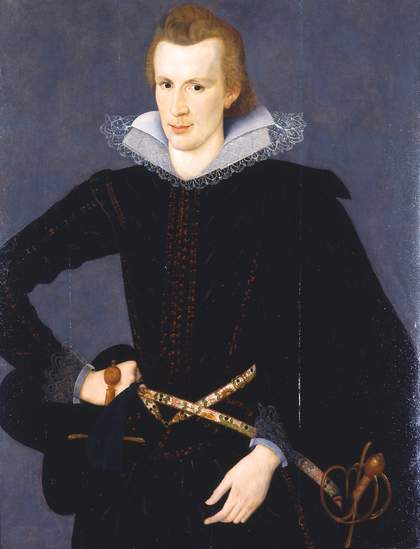
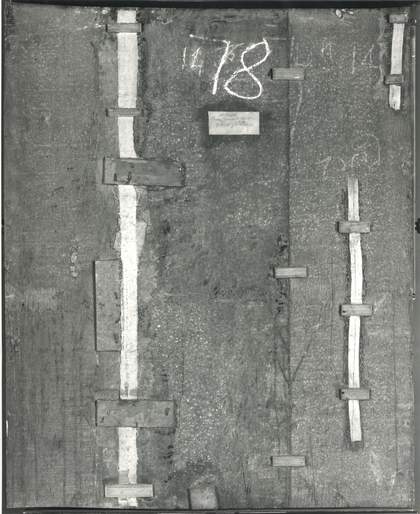
Fig.2
The reverse of Portrait of a Man in a Slashed Doublet c.1605
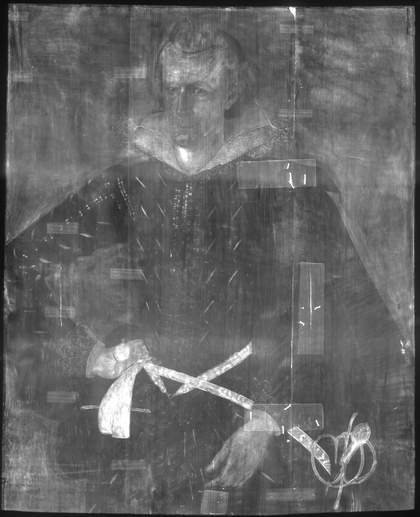
Fig.3
X-radiograph of Portrait of a Man in a Slashed Doublet c.1605
This painting is in oil paint on a wooden panel measuring 1000 x 806 mm (fig.1). The oak panel is composed of three vertical, radially cut boards, butt joined together with glue (figs.2–3). Their respective widths are as follows, from left to right with the panel viewed from the front: 238; 327; 245 mm. Dendrochronology revealed that the oak came from the Polish/Baltic region and that the panel could have been painted from 1598, with the most plausible dating from 1604.1 As revealed in fig.2, the panel required rejoining in the past, with canvas strips and wooden buttons applied to the reverse to reinforce the joins. These buttons are very obvious in the X-radiograph (fig.3). From the front the panel has a smooth surface with a slight forward bow and a step between the right and central planks. It is possible that the bottom edge and both sides have been trimmed since being painted; the paint at the bottom and side edges reaches the very edge of the panel, with design elements in the costume being truncated, whereas at the top edge the paint stops short of the edge of the panel by a few millimetres.
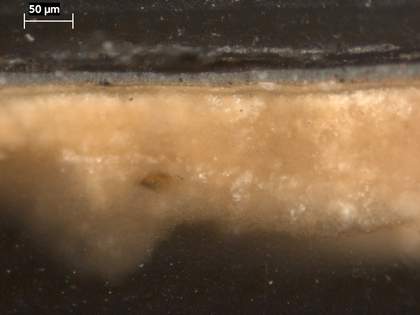
Fig.4
Cross-section taken from the grey background at the bottom edge, 6 mm from the left corner, photographed at x260 magnification. From the bottom of the sample upwards: two coats of white chalk ground; trace of very thin greyish brown priming; grey underpaint of background; dark shadow of background; varnish and later retouching
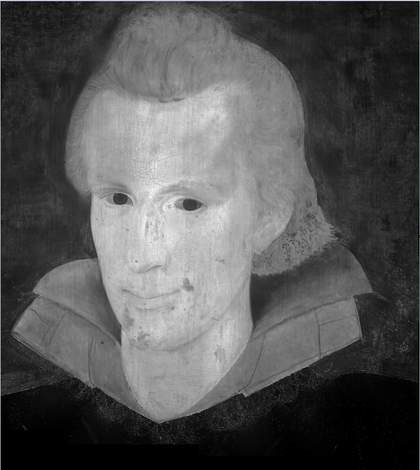
Fig.5
Infrared reflectogram of the head
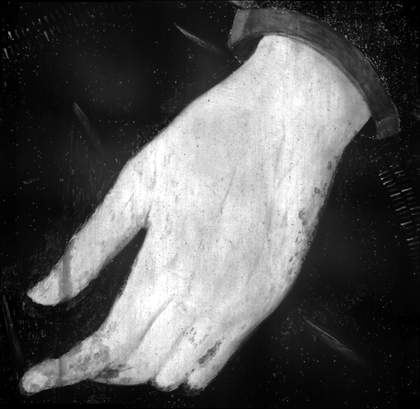
Fig.6
Infrared reflectogram of the sitter’s left hand
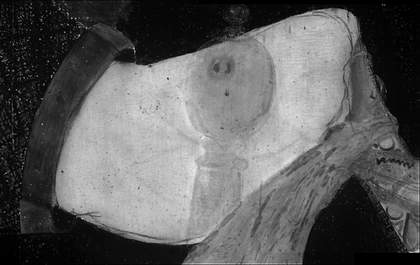
Fig.7
Infrared reflectogram of the sitter’s right hand and on the sword belt
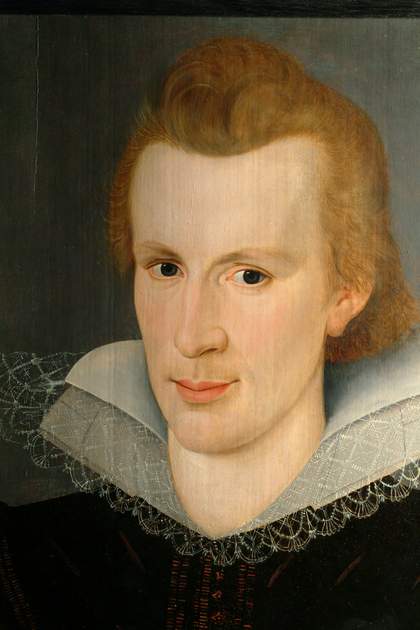
Fig.8
Detail of the head
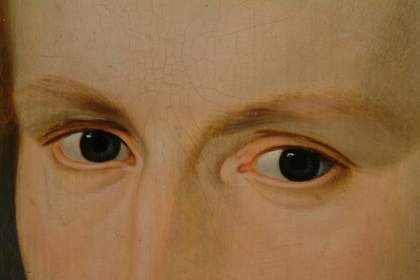
Fig.9
Detail of the eyes
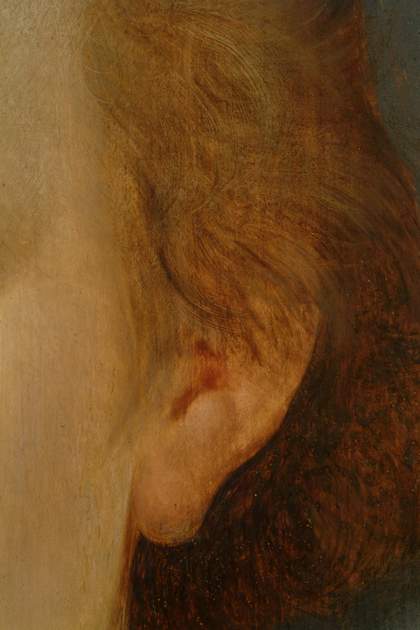
Fig.10
Detail of the ear and hair
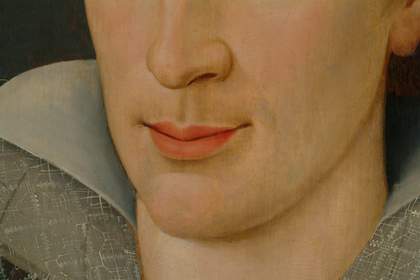
Fig 11.
Detail of lower half of face
There is evidence of glue sizing on the panel at this unpainted top strip. After that the panel was given two coats of white chalk bound in animal glue to form the ground (fig.4). The cross-sections reveal very thin, greyish brown priming on top of the ground; it is rich in oil medium and contains chalk, lead white, bone black, kaolin, and earth colours. Infrared reflectography reveals freehand drawing in a fine, crumbly pointed tool, in the collar and hands. This type of drawing is not apparent in the face, where fine, brushed lines appear to delineate the features (figs.5–11).

Fig.12
Detail of right hand and the sword belt
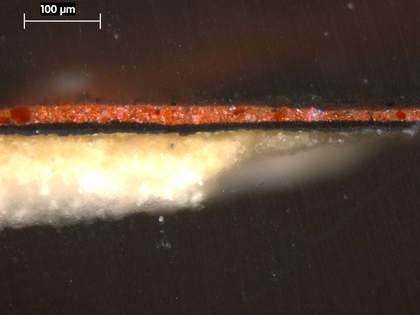
Fig.13
Cross-section taken from the black costume at the bottom edge, 211 mm from the right corner, and photographed at x250 magnification. From the bottom of the sample upwards: double ground layer; grey underpaint of costume; black paint of costume; red paint of decorative slash in costume; varnish and modern retouching

Fig.14
The same cross-section in fig.8 photographed at x250 magnification in ultraviolet light
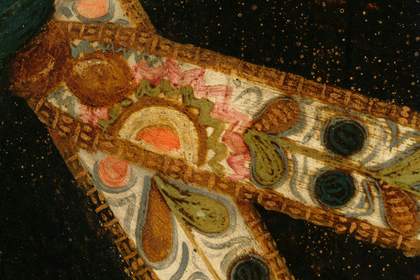
Fig.15
Detail of embroidered swordbelt
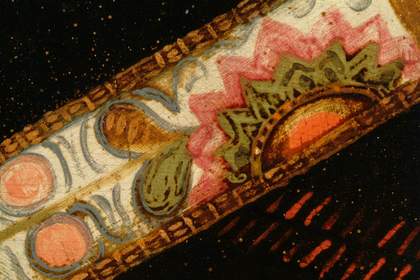
Fig.16
More embroidery from the swordbelt
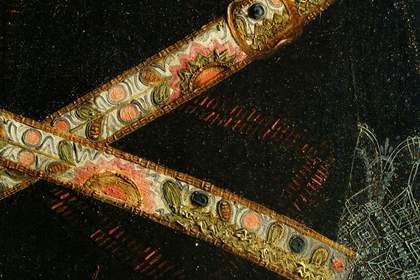
Fig.17
The swordbelt in raking light to show impasto
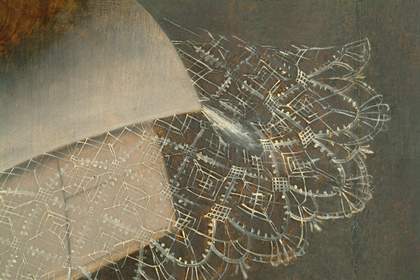
Fig.18
Detail of collar, lace and background
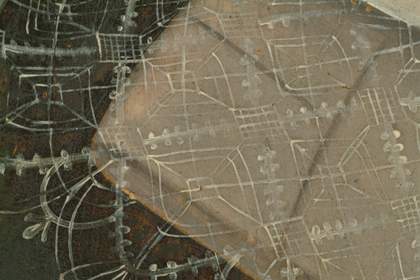
Fig.19
Detail of lace on collar
The black costume was first painted in grey before being finished in rich black (figs.12–14). The binding medium throughout appears to be pure oil, as there is no fluorescence in the black when viewed in ultraviolet light. The principal pigment is bone black, with smaller additions of lead white; earth colours; chalk; probably some lake, dolomite and finally a copper pigment to aid the drying of the paint. The embroidered sword belt contains some expensive, highly coloured pigments: orpiment for the rich orangey yellow; azurite for the blue; lead-tin yellow; vermilion and red lake, and probably verdigris (figs.15–17).2 The delicate stiffened lace of the collar and at the wrists is painted with pure lead white (figs.18–19).
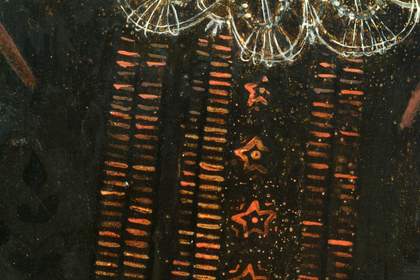
Fig.20
Detail of brocade on black jerkin
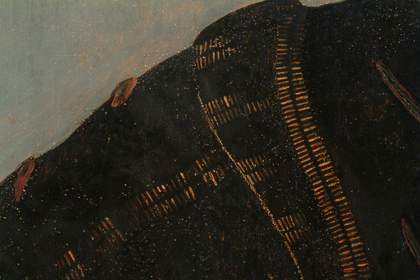
Fig.21
Detail of shoulder, decorative detailing, background and lead soap aggregates
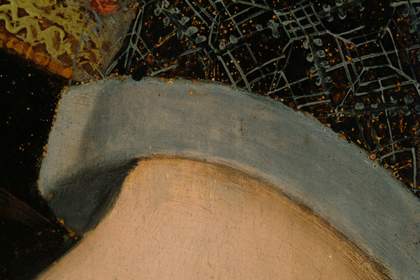
Fig.22
Detail of wrist, cuff, decorative detailing and lead soap aggregates
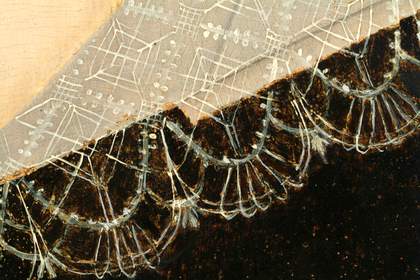
Fig.23
Detail of collar, lace and black jerkin
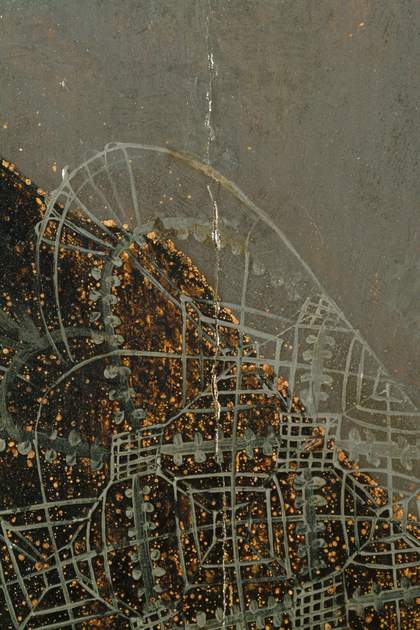
Fig.24
Detail of cuff and background, with lead soap aggregates in the black costume
All areas of the black costume suffer from lead soap aggregates that have pushed through the surface of the paint (figs.20–25). Where they are densely scattered, as they are on the sleeves at the wrists, they detract from the contrast of fine white lace overlying deep black brocade (figs.22–24).3
.
August 2020
